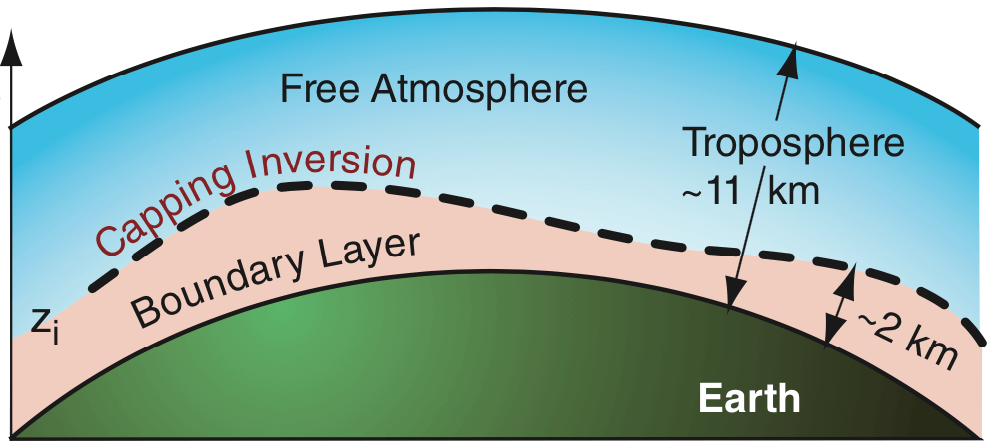The Atmospheric Boundary Layer (ABL), also known as the Planetary Boundary Layer (PBL), is the lowest part of Earth’s atmosphere directly influenced by the surface of the planet. It extends from the Earth’s surface up to a variable height, typically ranging from a few tens of meters to about 2 kilometres (1.2 miles) above the ground, although it can be much thicker under certain conditions, such as during convective days. The ABL is characterized by its turbulent nature, which is primarily driven by the exchange of heat, moisture, and momentum between the Earth’s surface and the atmosphere. This exchange is influenced by factors such as solar radiation, surface roughness (e.g., forests, cities, oceans), and surface temperature variations.

Key features and layers of the ABL include:
- Surface Layer: The bottommost layer of the ABL, usually extending up to about 10-100 meters above the ground, where the effects of surface roughness and friction are most pronounced. Wind speed increases logarithmically with height, and temperature and humidity profiles are strongly influenced by surface conditions.
- Ekman Layer: Above the surface layer, the Ekman layer is characterized by a gradual change in wind direction with height due to the Coriolis effect. This layer typically extends up to about 500 meters but can vary depending on atmospheric stability and wind speed.
- Convective Boundary Layer (CBL): On sunny days when the surface heats up, the air near the ground becomes warmer and less dense, leading to convection. This results in the formation of a well-mixed CBL, where turbulence is strong and air parcels are constantly rising and sinking, mixing the layer vertically. The height of the CBL can grow to several kilometres during the day and collapses at night.
- Stable Boundary Layer (SBL): At night, when the surface cools, a stable layer of air forms near the ground, inhibiting turbulence and vertical mixing. The SBL is characterized by a temperature inversion, where temperature increases with height, and wind speeds are generally lower.
The ABL plays an important role in various atmospheric processes, including the dispersion of pollutants, cloud formation, and the exchange of greenhouse gases between the Earth’s surface and the atmosphere.